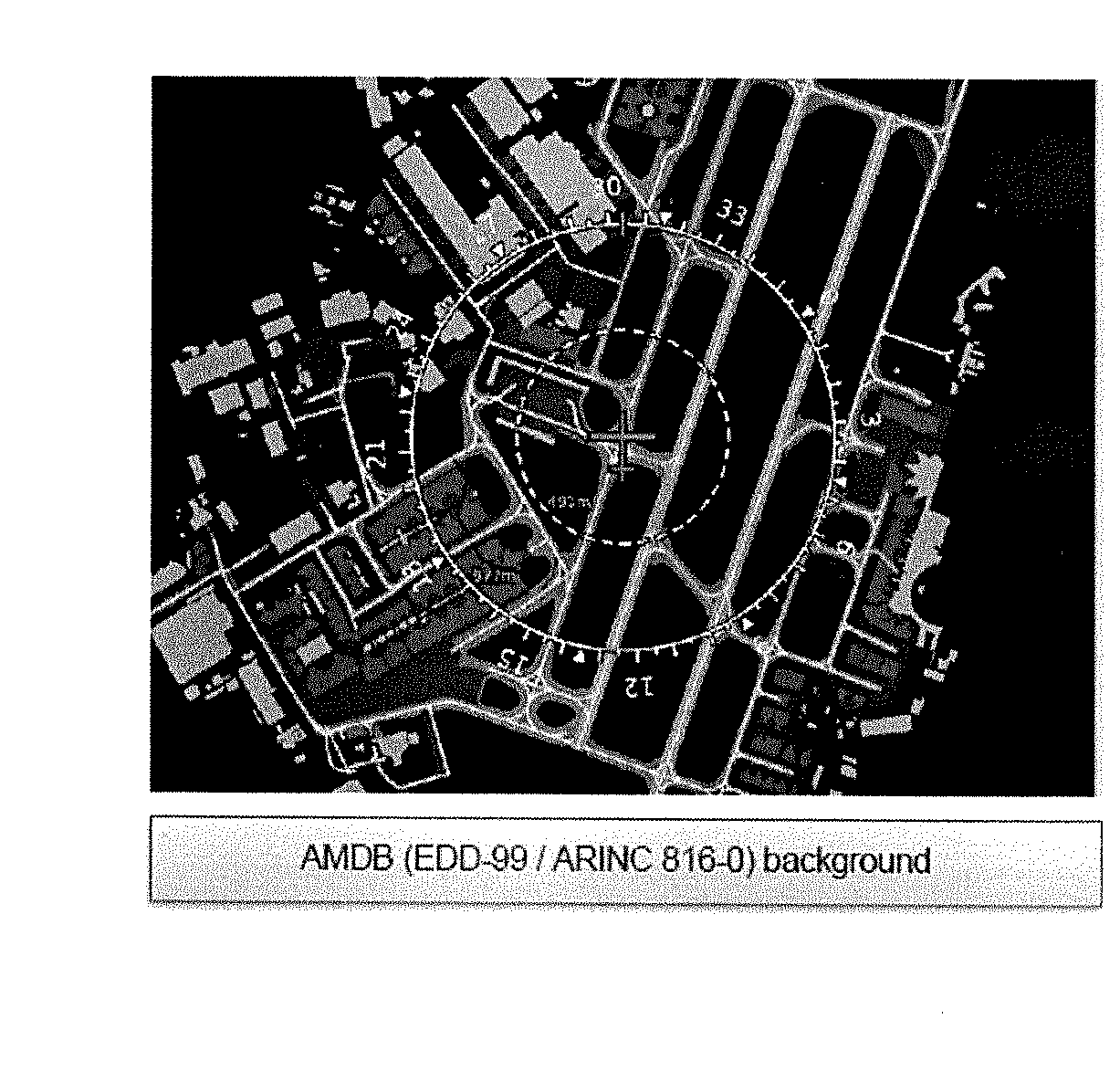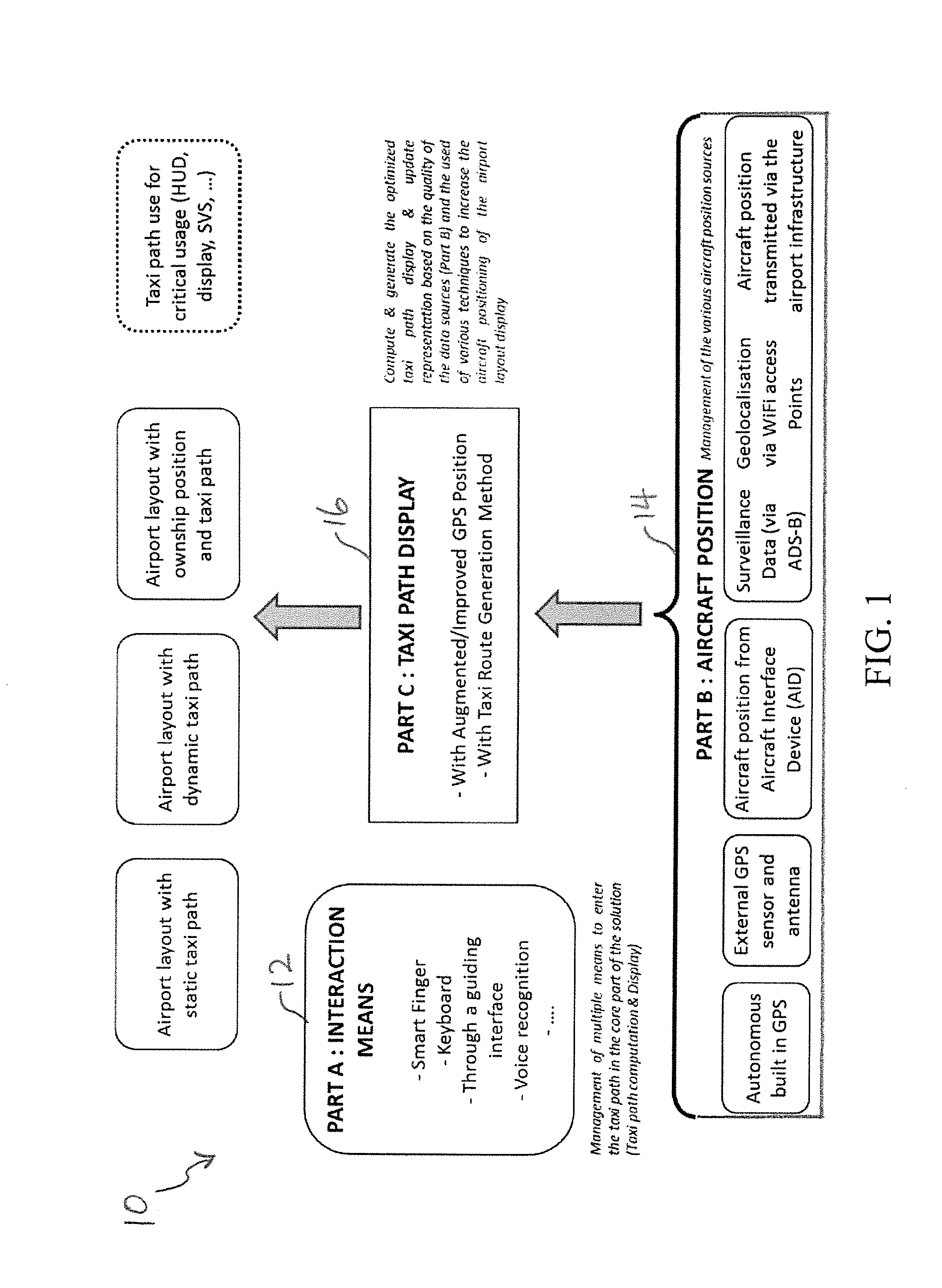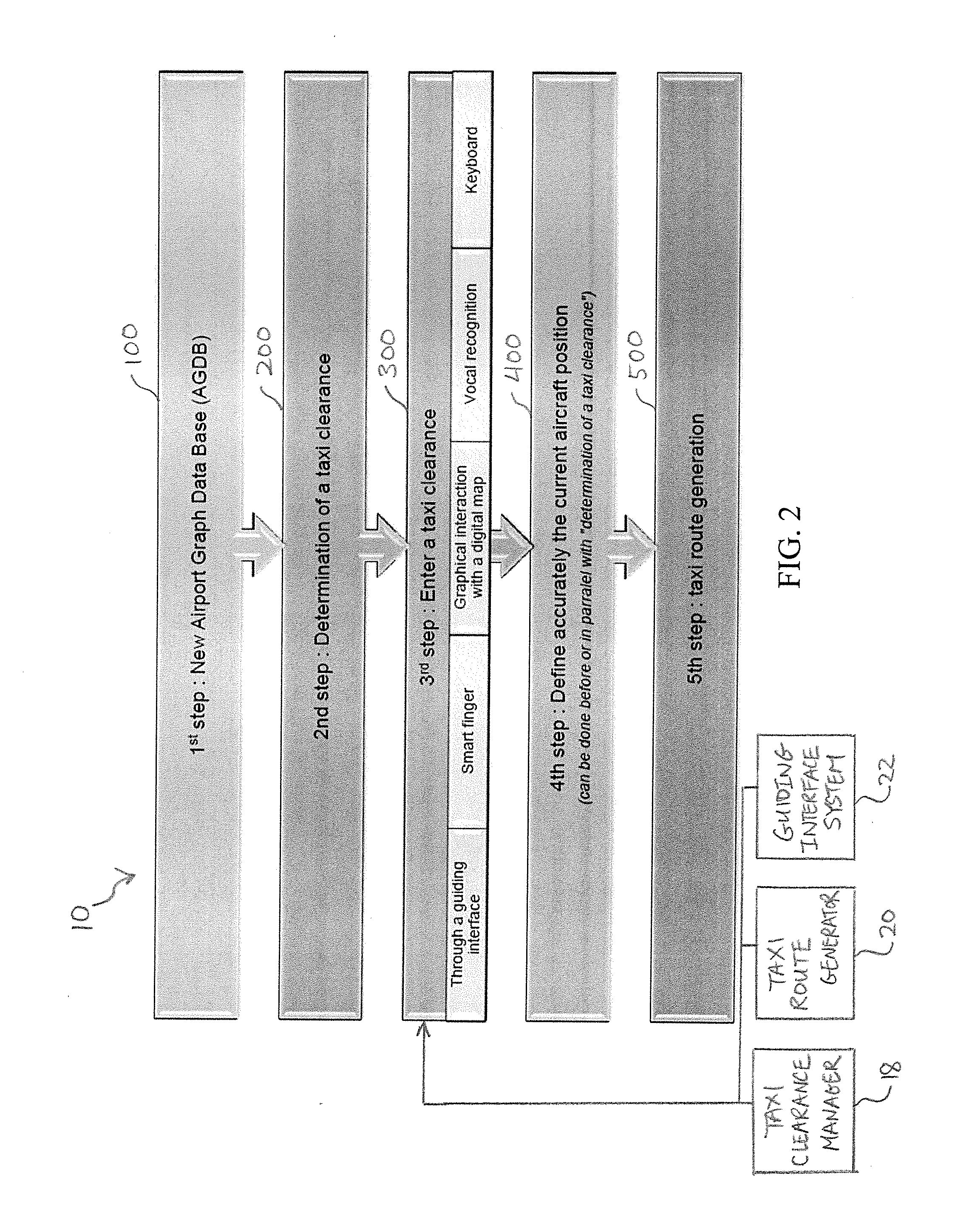Systems and methods for providing optimized taxiing path operation for an aircraft
a taxiing path and optimization system technology, applied in the field of aircraft taxiing systems, can solve the problems of insufficient accuracy and data/time consumption of applications, large workloads of flight crews, slow and cumbersome manual process of entering sequences, etc., and achieve the effect of small memory space and easy embedding in different sequences
- Summary
- Abstract
- Description
- Claims
- Application Information
AI Technical Summary
Benefits of technology
Problems solved by technology
Method used
Image
Examples
Embodiment Construction
[0038]Preferred embodiments of the present disclosure are described below by way of example only, with reference to the accompanying drawings. Further, the following description is merely exemplary in nature and is in no way intended to limit the disclosure, its application, or uses. As used herein, the term “module” or “unit” may refer to, be part of, or include an Application Specific Integrated Circuit (ASIC), an electronic circuit, a processor (shared, dedicated, or group) and / or memory (shared, dedicated, or group) that executes one or more software or firmware programs, a combinational logic circuit, and / or other suitable components that provide the described functionality. Thus, while this disclosure includes particular examples and arrangements of the modules, the scope of the present system should not be so limited since other modifications will become apparent to the skilled practitioner.
[0039]Referring now to FIG. 1, the present taxiing path optimization system is general...
PUM
 Login to View More
Login to View More Abstract
Description
Claims
Application Information
 Login to View More
Login to View More - R&D
- Intellectual Property
- Life Sciences
- Materials
- Tech Scout
- Unparalleled Data Quality
- Higher Quality Content
- 60% Fewer Hallucinations
Browse by: Latest US Patents, China's latest patents, Technical Efficacy Thesaurus, Application Domain, Technology Topic, Popular Technical Reports.
© 2025 PatSnap. All rights reserved.Legal|Privacy policy|Modern Slavery Act Transparency Statement|Sitemap|About US| Contact US: help@patsnap.com



